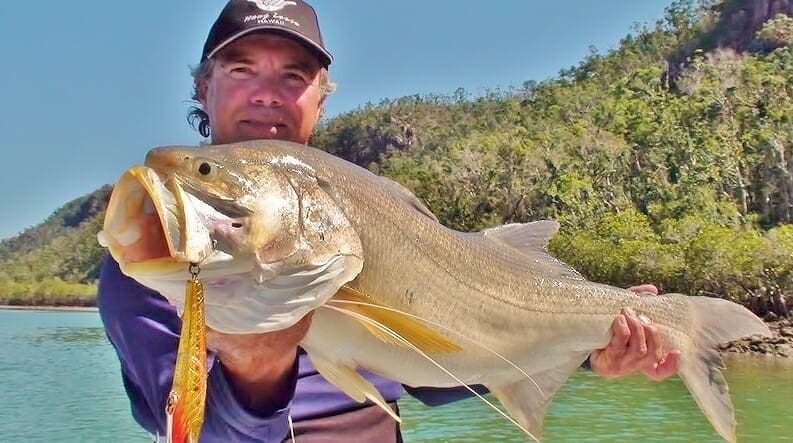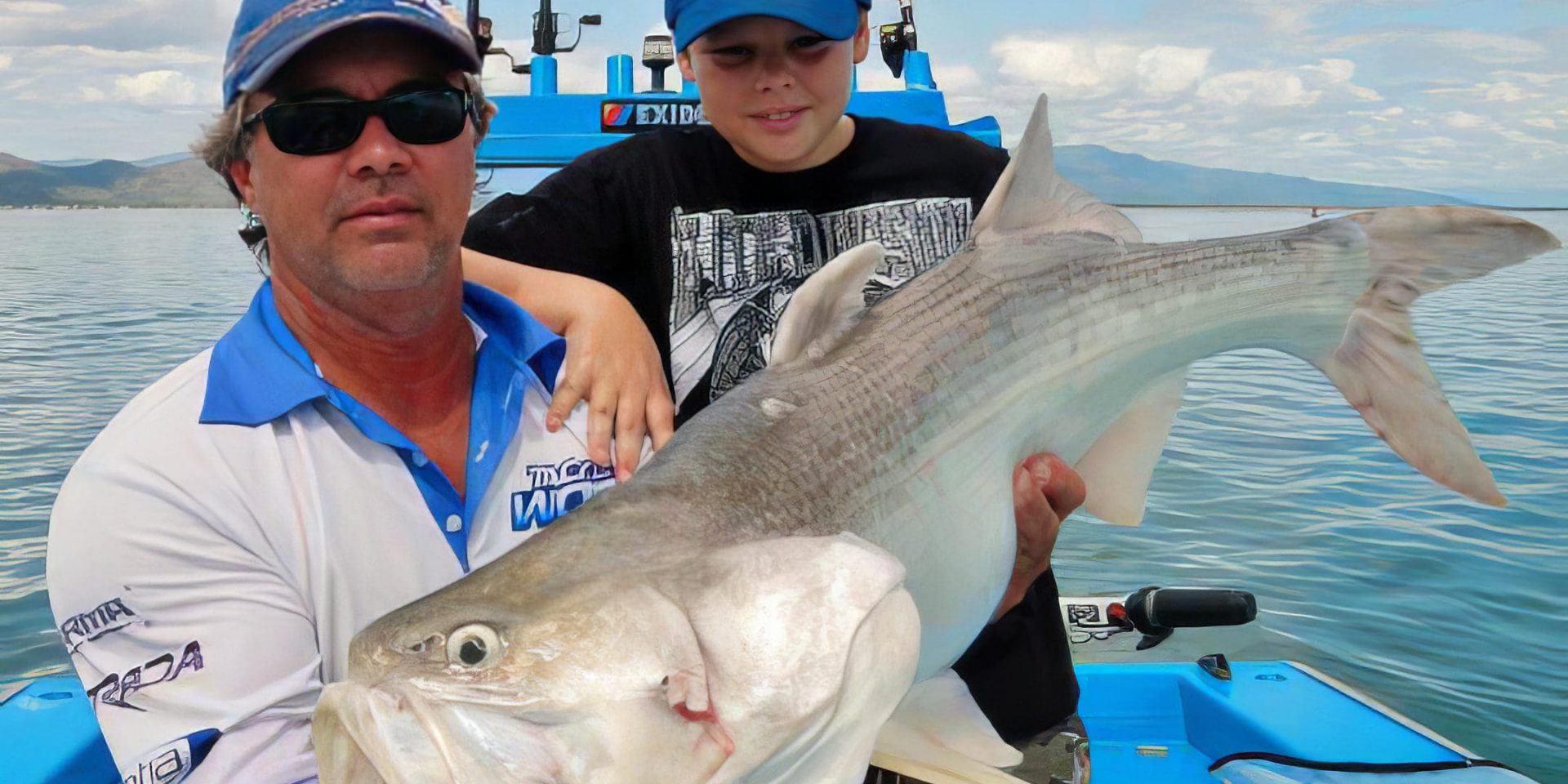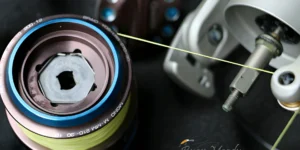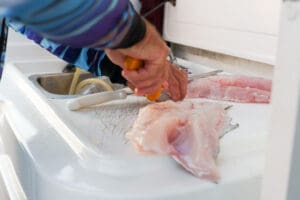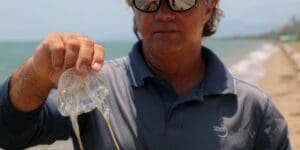After barra, King Threadfin Salmon Polydactylus sheridani are perhaps the most highly prized tropical estuarine sportsfish in Australia.
Anglers having accomplished a metre plus barra, often turn their attention to a metre plus threadfin as they pull like schoolboys and are surprisingly hard to catch until you work them out.
They are also FUN! Threadfin are often unpredictable during the fight, screaming away in one direction before speeding back toward the boat, requiring a mad dash from the angler to recover line and stay connected.
Once captured, King Threadfin can be quite tricky to fillet because of the large nodules that grow along the backbone and below each of their two dorsal fins.
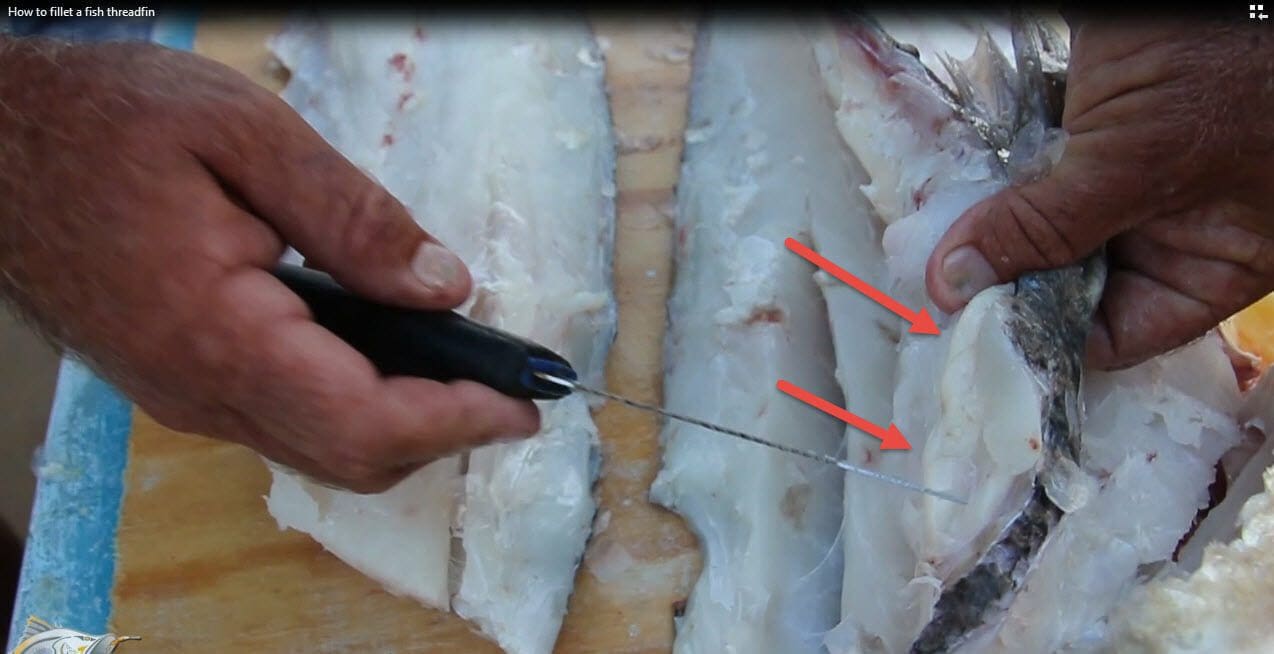
Like barra, threadfin salmon are protandrous hermaphrodites – meaning they get the best of both worlds. Born male changing to female as they age, making the transition at around about 80-95cm in length.
They are found from Broome in WA, across the top end and all the way down the east coast to Brisbane.
In fact, there is a healthy population in the Brisbane River as I discovered on my last trip down there.
They readily respond to lures and live bait, but my favourite way to catch them is with jigs. The Balista Juggernaut is a real winner.
Our online course Threadfin Tactics can help you learn the techniques to catch one, and once you have a thready in the esky, the next step before tasting the beautiful white flesh is to run off the fillets.
But… if you’ve ever tried to fillet a threadfin fish, you may have noticed it can be difficult to fillet around the nodules without wastage.
I employ several tricks to eliminate this issue;
The first is to skirt carefully around the nodule without pushing the knife blade too far in, and then come back to make the main fillet.
Next is to avoid removing the first side completely until you have got a start on the second filet, and this works for all similarly shaped fish.
It’s a bit hard to explain in words which is why I made the video.
Even guys that have been filleting fish for years are amazed at how much flesh they were losing before learning this simple trick.
I made a similar video several years ago filleting a barra which you can view here if your interested; Simple trick to filleting barra
However the threadfin filleting video is more comprehensive and includes skinning.
Personally I don’t scale my fish, I don’t feel there’s a need. I simply skin the fillet and toss the skin with scales attached in the bin or crabpot. Scaling they seem to go everywhere and scales end up in the house upsetting the wife.
And also, please practice catch and release where possible after you have taken one or two for the table. Threadfin stock assessments are incomplete and need to be a considerable size before they breed as females so please only take what you need.
Unlike barra, threadfin are not a hardy fish and lose scales easily. As demonstrated in the video, if your intention is to release the fish, please place it on a wet towel and handle it minimally when removing hooks. Quick photos and straight back in the water is ideal.
If you are interested in fishing for threadfin but either don’t know where to start or are not having much luck, they can be a tricky fish to nut out.
We are run an online Threadfin Tactics course and you can find out more by clicking the button below.
